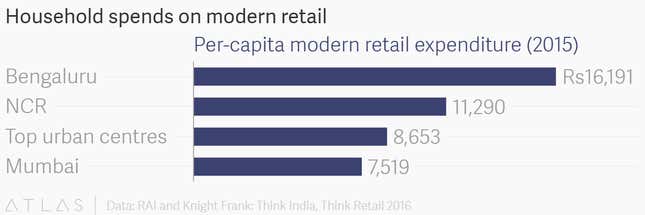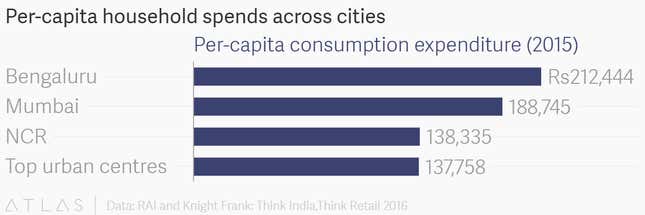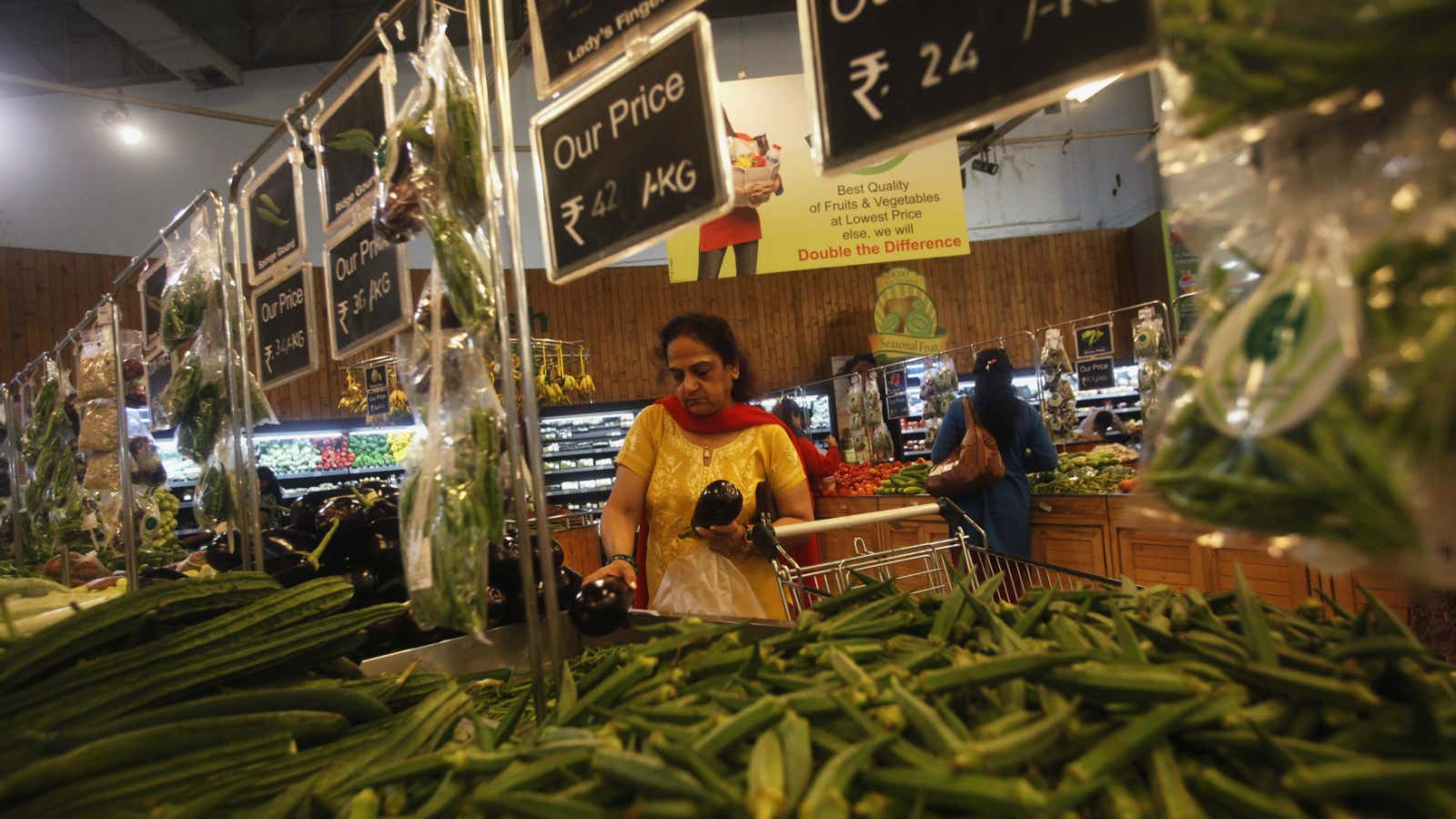When it comes to shopping in style, no other Indian city can match up to good old Bengaluru—the country’s technology capital.
Thanks to its almost 25-year marriage to information technology, the city’s shoppers have displayed a penchant for modern retail. India’s Silicon Valley has rapidly upgraded from traditional mom & pop stores to air-conditioned establishments that provide invoices and offer an overall better shopping experience.
Among major Indian cities, Bengaluru has the highest rate of shoppers patronising supermarkets, grocery stores—such as Nilgiri’s and Spencer’s—and malls, according to a 2016 report by Knight Frank and the Retailers Association of India. Bengaluru paced ahead of Mumbai and Delhi, including the National Capital Region (NCR), on both per capita consumption expenditure and per capita modern retail expenditure. Bangalore has only about 10 million estimated residents in 2015—much lower than Mumbai’s (estimated 22 million) and NCR (24 million), according to the report.
Here’s what annual household expenditure across cities looked like in 2015.



While both Mumbai and NCR have higher consumption expenses (money spent on household purchases), modern retail store penetration in Bengaluru stands at 24%, thanks to its relatively young population. So, for every 100 shoppers, 24 Bengalurians buy stuff at “modern” trade stores—much more than in any other Indian city. In Mumbai, this figure rests at 13.4%. For India’s top seven metros, the average is 19%.
Why is Bengaluru different?
A large chunk of Bengaluru’s population is employed in the information technology sector. This has spurred adaptation to modern retail, suggests Dripto Mukhopadhyay, director of economic research, Nielsen India.
“The shoppers’ profile is more experimental, adaptive and technology savvy,” Mukhopadhyay says. As a result, the city is characterized by a fair distribution of modern retail.
Cities in southern India, in general, have fared better than their northern counterparts, both in terms of education and income. “South is almost like a middle-income country with superior performance (and improving) on a range of socio-economic parameters… with a reasonably well-educated and aspirational society..,” the Business Standard newspaper reported on April 20.
